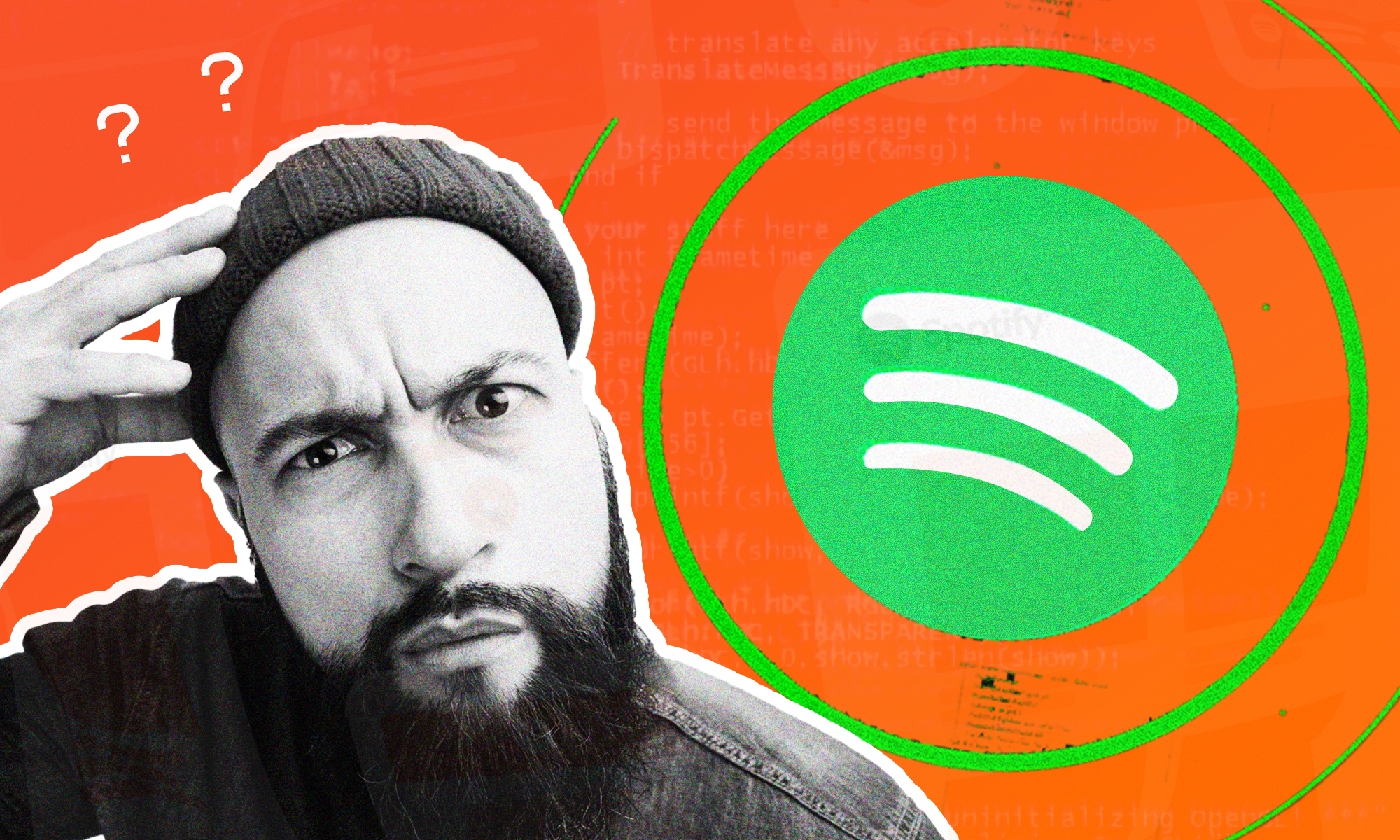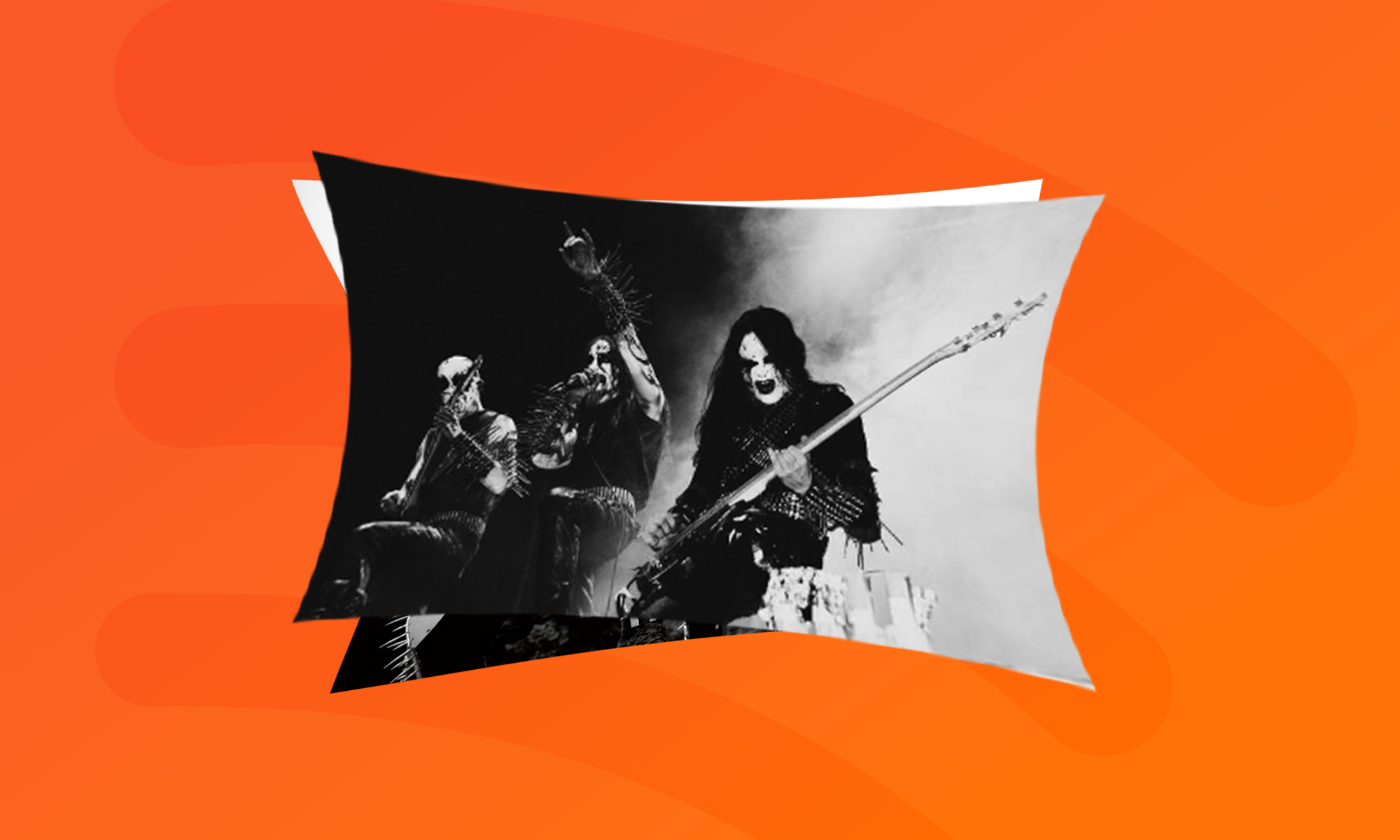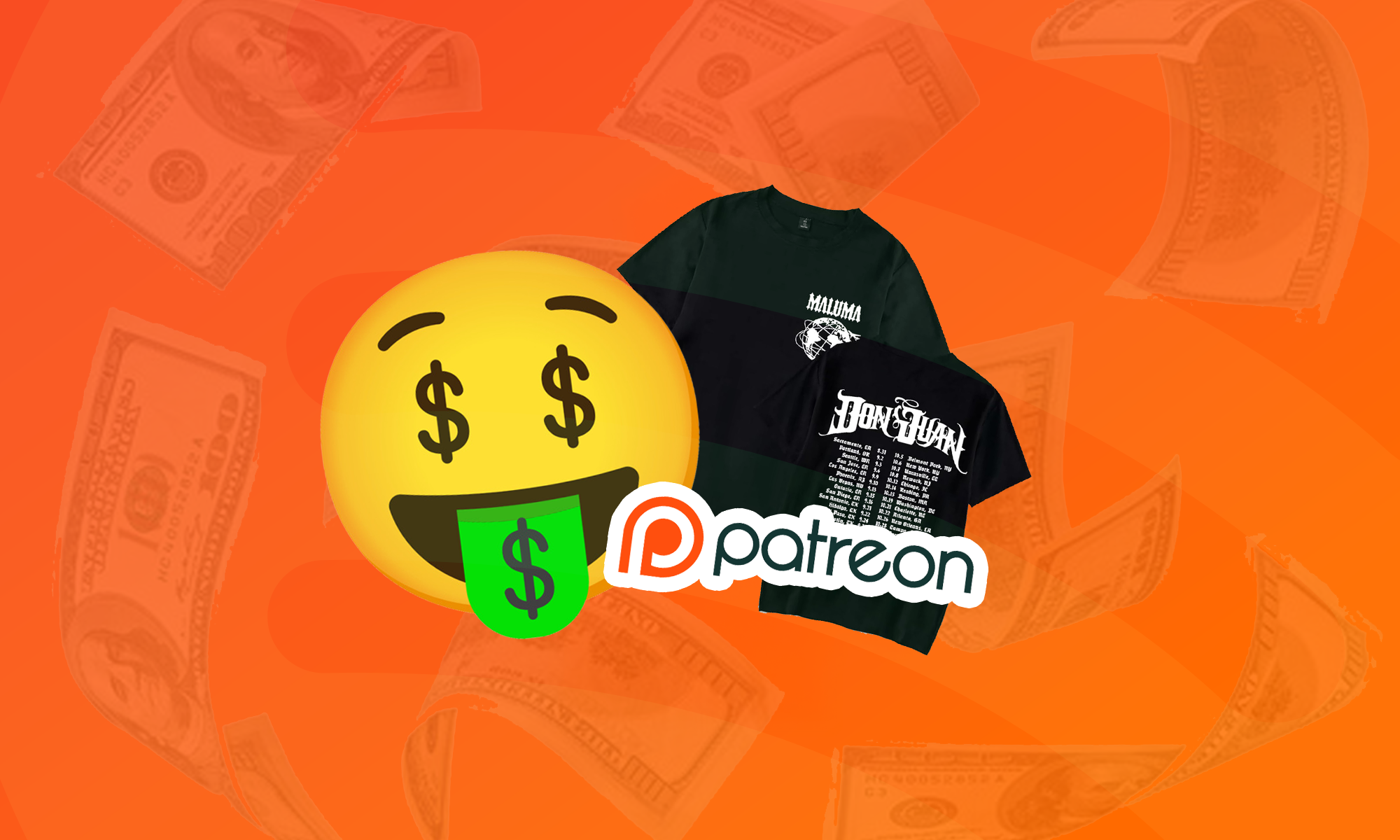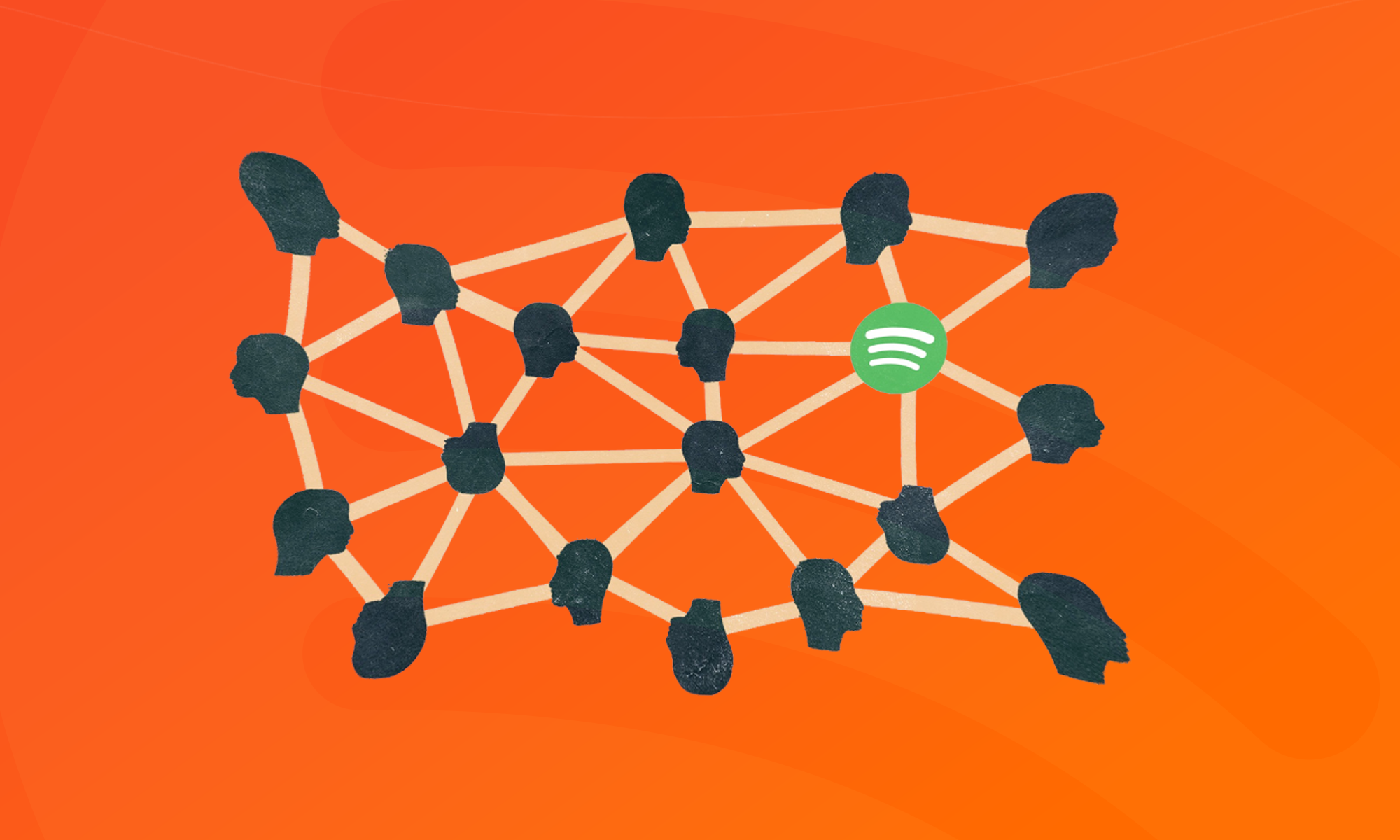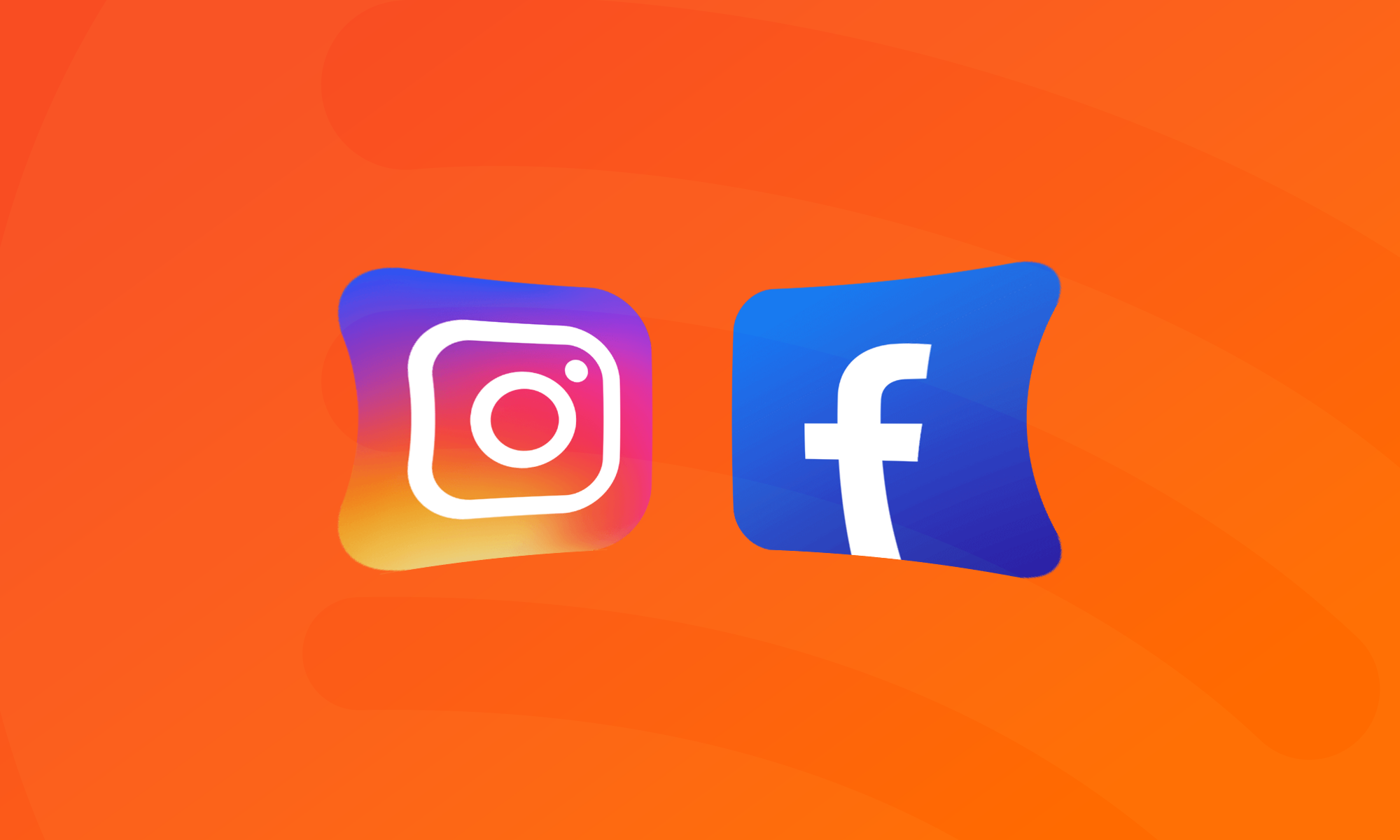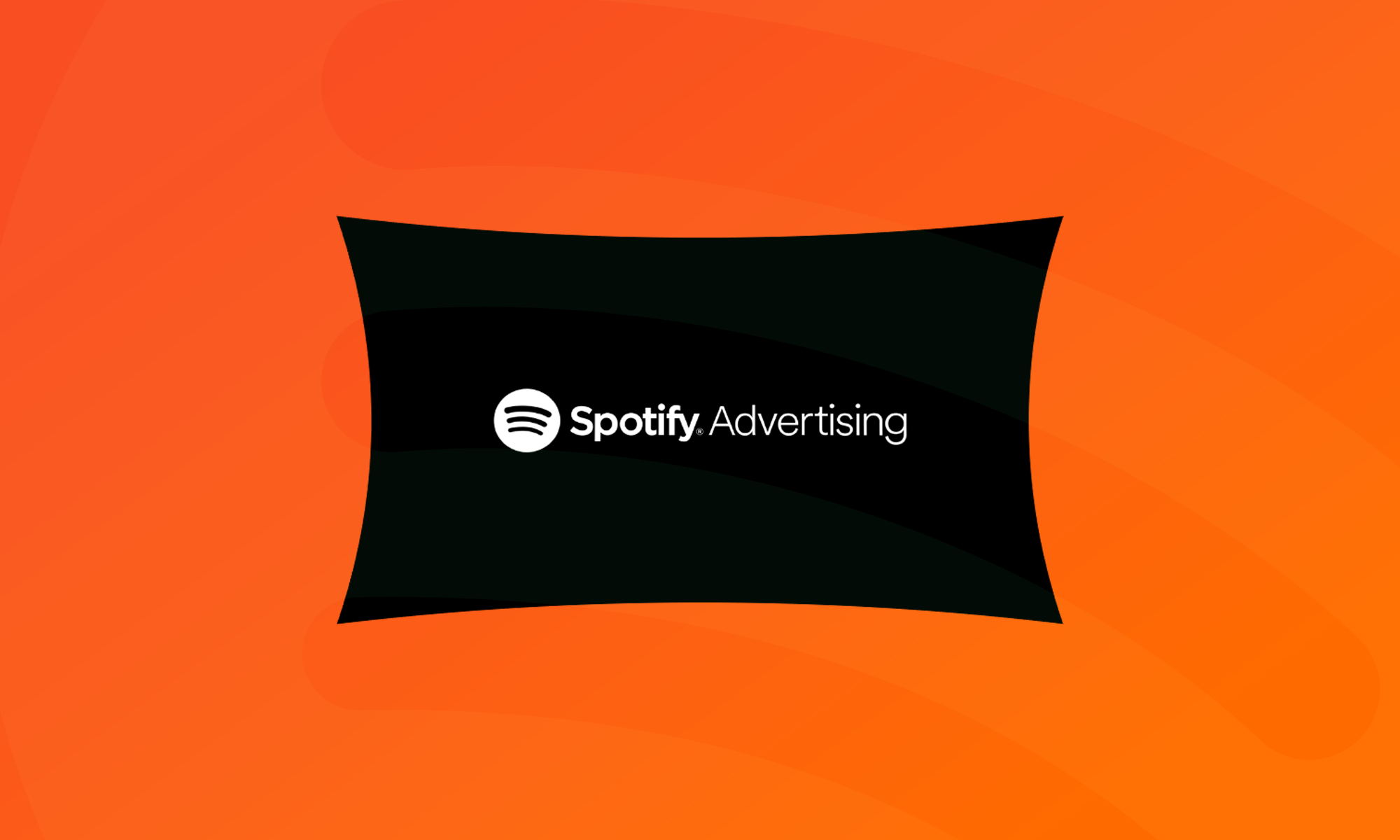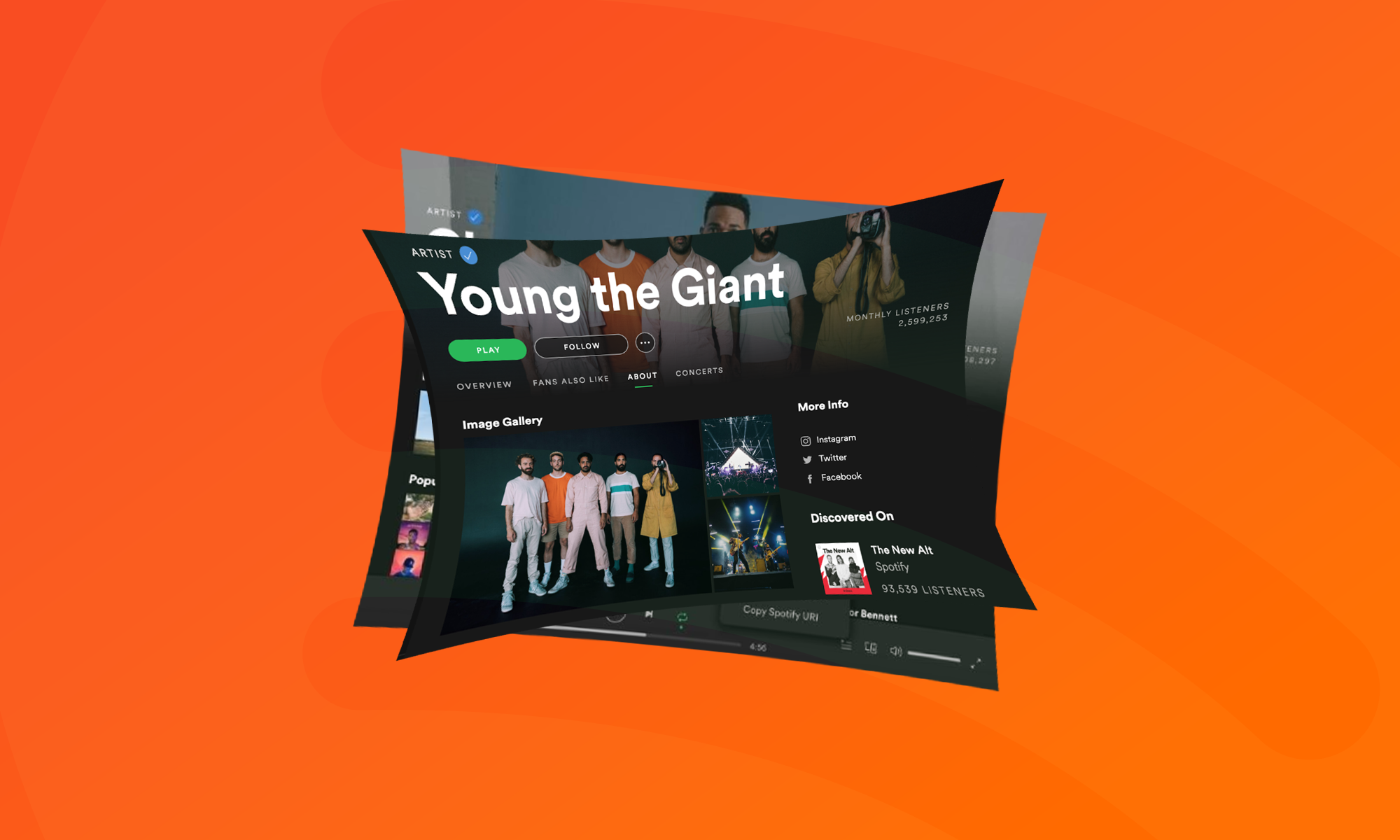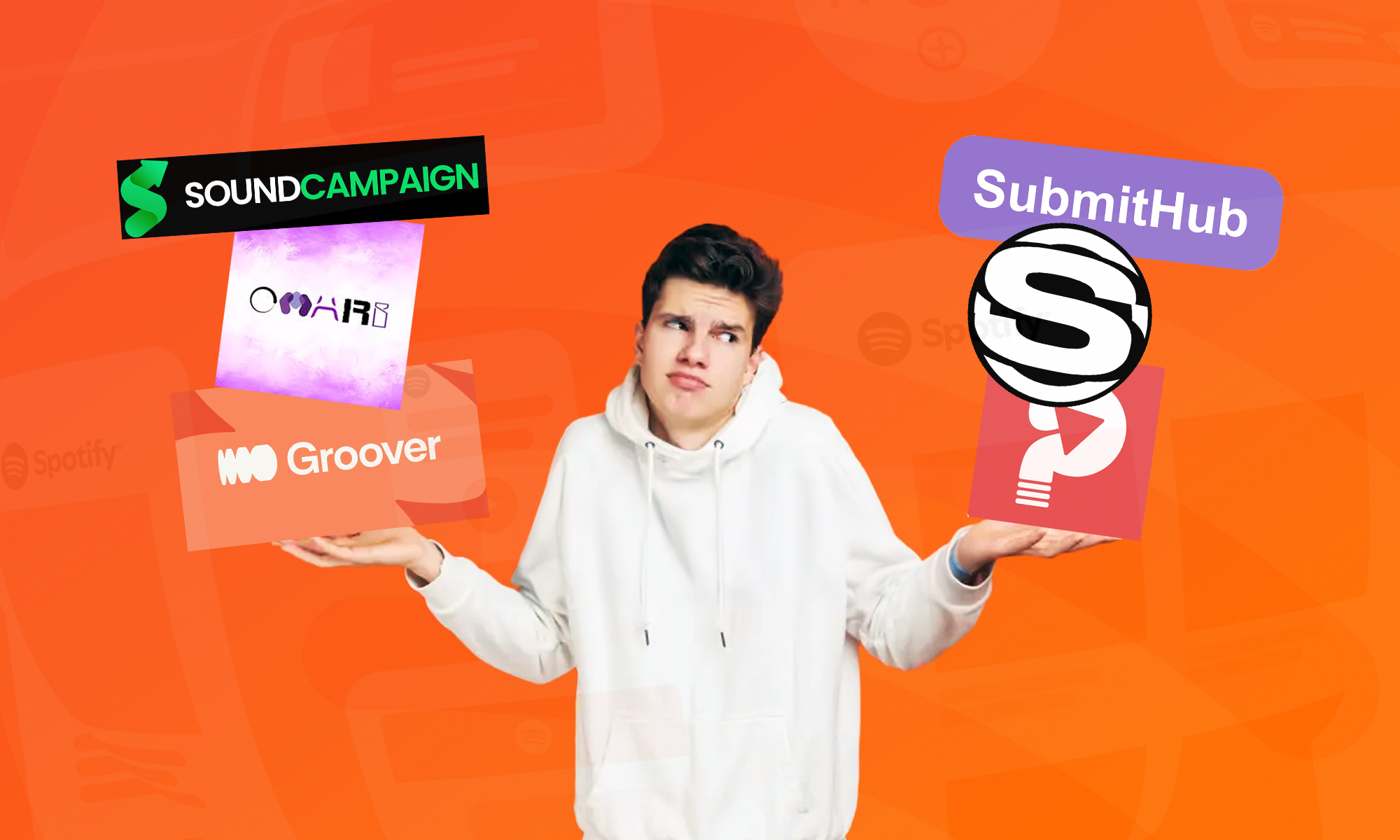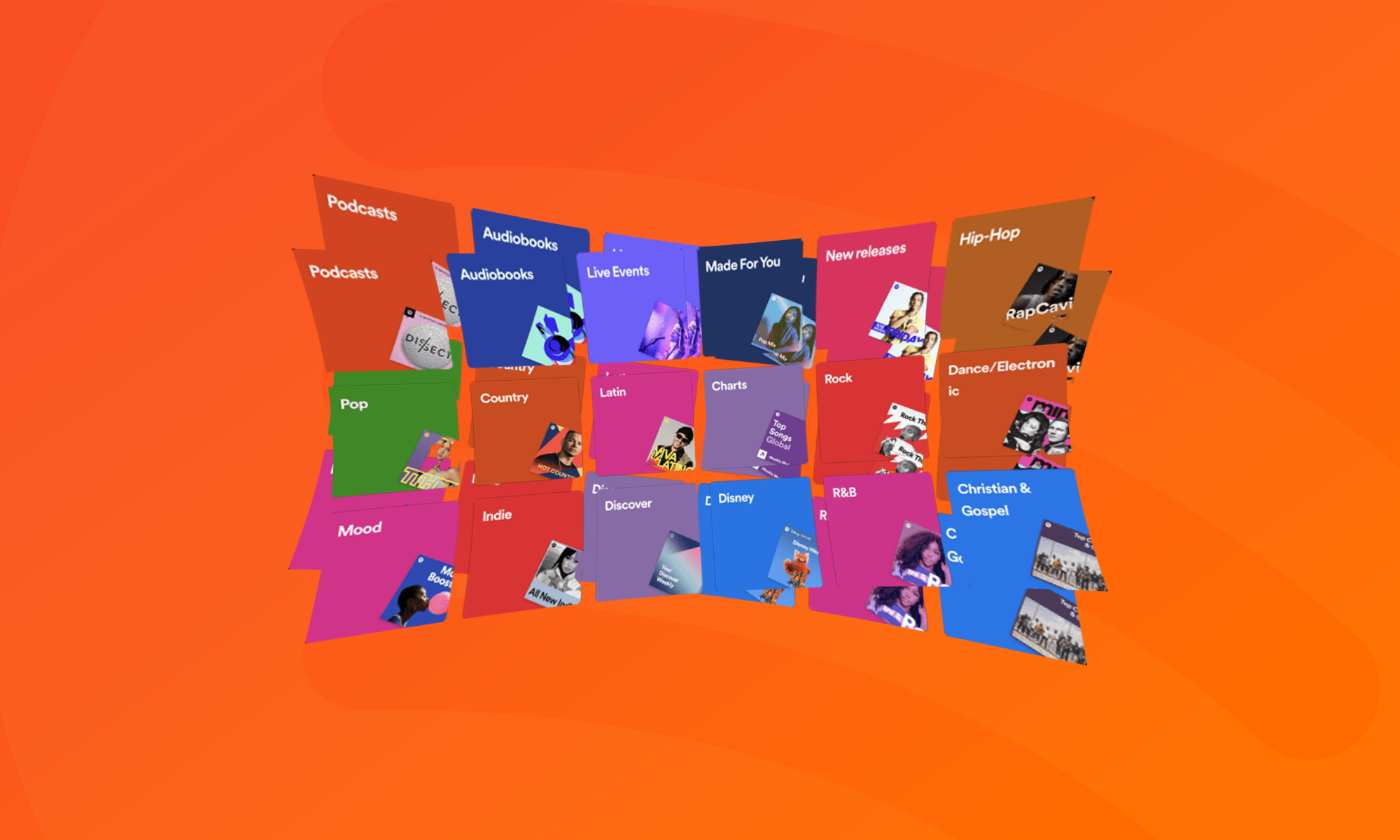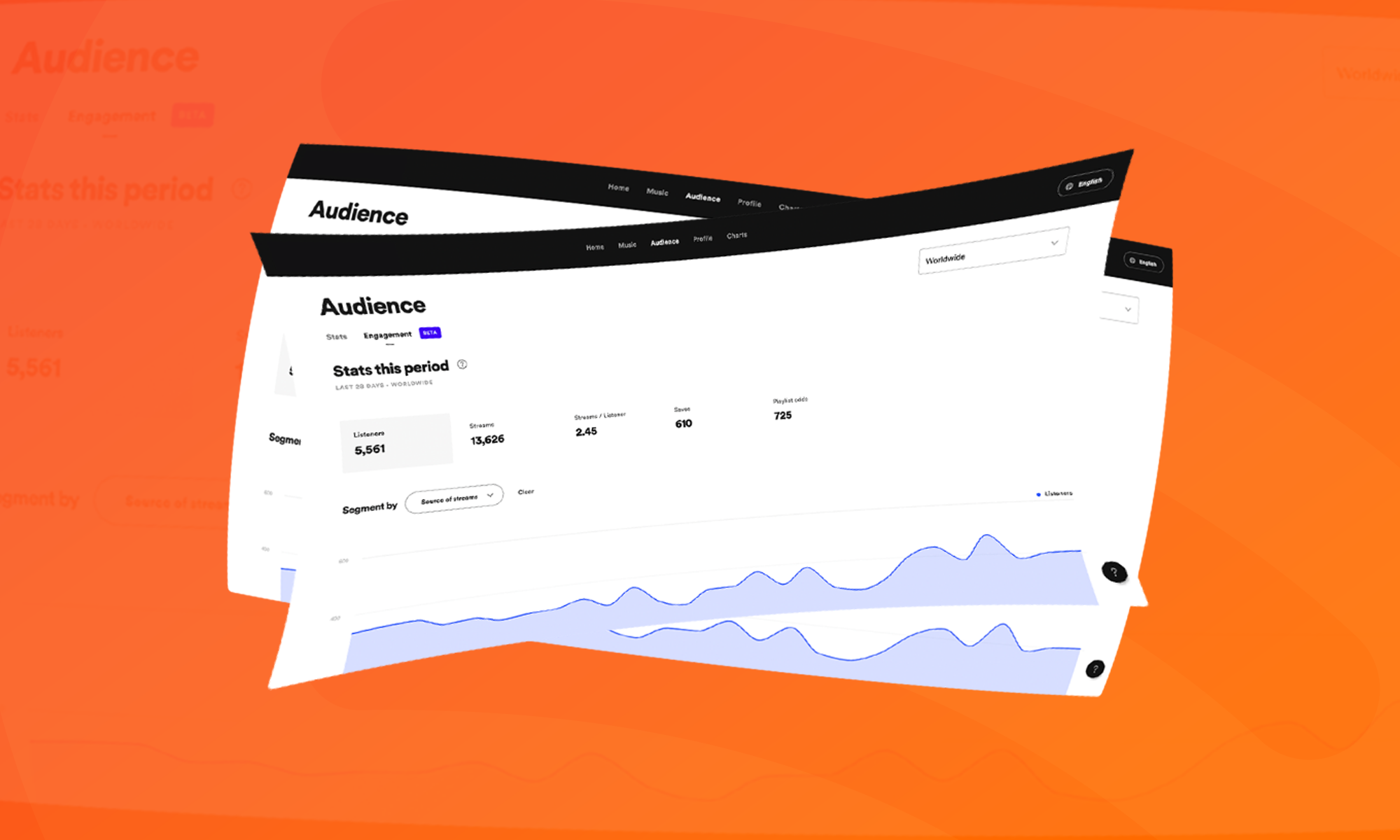How to Increase Your Spotify Popularity Score in 2025
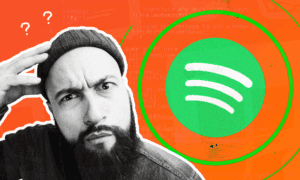
How to Increase Your Spotify Popularity Score in 2025
If you're releasing music on Spotify and want the algorithm to start recommending your songs, there's one metric that matters more than most: your Spotify popularity score.
In this guide, we’ll break down what the Spotify popularity score is, why it’s so important in 2025, and how to increase it effectively without gaming the system.
What Is the Spotify Popularity Score?
The Spotify popularity score is a hidden metric that ranks each track on a scale from 0 to 100. While Spotify doesn’t publicly display this number, it plays a major role in how the platform recommends music.
The score is based on multiple engagement signals, including:
- Total streams
- Save rate
- Repeat listens
- Skip rate
- Playlist adds
- Listener growth over time
Importantly, the popularity score is relative. Spotify compares your track’s performance to others in real time. A score of 50 means your song is performing better than a huge portion of tracks on the platform.
While no one outside Spotify knows the full algorithm, data from independent campaigns suggests that a score of 30 or higher is a key threshold. Once you pass that number, your song becomes more likely to be added to algorithmic playlists like Discover Weekly, Release Radar, and Radio.
Why Your Spotify Popularity Score Matters
Your Spotify popularity score directly influences your reach on the platform. It affects whether Spotify’s algorithm sees your track as worth recommending to new listeners.
Here’s what a higher score can impact:
- Placement in algorithmic playlists (Discover Weekly, Release Radar, Daily Mix, etc.)
- Autoplay behavior after your song ends
- Your appearance in Spotify Radio for similar artists
- Your ranking in search and browse categories
In short, a higher Spotify popularity score makes your song more discoverable. It's like an invisible reputation score that decides whether Spotify helps you grow... or leaves your music buried.
What’s a “Good” Spotify Popularity Score?
Here’s a general breakdown of what different score ranges mean:
- 0–20: Low activity. Likely very few saves or streams. Unlikely to see any algorithmic reach.
- 21–29: Some traction. May be getting streams from social shares or small playlists.
- 30–49: Strong performance. Now in range for algorithmic activity.
- 50–69: Very healthy. High chance of Discover Weekly and Release Radar traction.
- 70+: Viral-level momentum. Likely appearing in multiple algorithmic feeds.
How to Increase Your Spotify Popularity Score
1. Drive Real Engagement Early
Your first 7–14 days after release are critical. Focus on getting real listeners to stream, save, and follow you. Avoid bots, fake playlists, or low-quality promotion tactics - they might temporarily inflate numbers, but they won't improve your Spotify popularity score.
2. Run Targeted Ads to the Right Listeners
Ads on Meta (Facebook/Instagram) or Spotify can help you reach people who are most likely to engage with your music. Target fans of similar artists, and send traffic directly to your track or smart link.
Strong engagement from these listeners (like saving your track, listening more than once or following you) will boost your score faster than passive plays.
3. Get on Quality Playlists
Playlists can provide the exposure needed to increase your Spotify popularity score, but not all playlists are equal. Look for curated lists with real followers, genre genre alignment and active engagement.
Avoid botted or recycled playlists. Instead, pitch your music to real curators through tools like SubmitHub, Groover or services like Spin Promo. A few high-quality playlist placements can be more valuable than dozens of low-impact ones.
4. Optimize Your Spotify Profile
When new listeners land on your profile, make sure it’s ready to convert. Add a compelling bio, professional photos, and an Artist Pick that drives attention to your latest release.
The easier it is for fans to engage with your profile, the more likely they are to save or follow - both of which increase your popularity score.
5. Encourage Saves and Shares
The save rate is one of the most important factors behind the Spotify popularity score. A high save rate tells the algorithm your track has long-term appeal.
Encourage your fans to save your song, share it with others and add it to their own playlists. These signals carry weight and compound over time.
6. Avoid Fake Streams at All Costs
Buying streams or getting added to fake playlists might boost your play count temporarily, but it kills your engagement metrics. Spotify’s algorithm is smart enough to know when streams are low quality, and it will punish your popularity score as a result.
Always prioritize quality over quantity.
How to Check Your Spotify Popularity Score
You can use third-party tools like Artist.Tools or Musicstax to see check the popularity score of your songs for free. These tools pull data directly from the Spotify API so they're completely accurate and up-to-date.
Final Thoughts
Your Spotify popularity score is one of the most important hidden signals behind your music’s success on the platform. It influences how far your track travels, who it reaches and whether the algorithm helps you grow.
If you want to increase your score, Spin Promo delivers campaigns specifically designed to increase your engagement and push your Spotify popularity score to the 30+ level organically.
Learn more about Spin Promo here
Black Metal Promotion: How to Promote Black Metal on Spotify
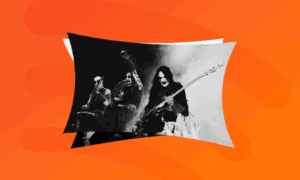
Black Metal Promotion: How to Promote Black Metal on Spotify
Let’s be honest, black metal promotion isn’t easy.
The genre lives in the shadows, intentionally raw, underground, and anti-commercial. That’s what makes it special, but it’s also why it’s so often ignored by mainstream music marketing platforms.
If you’re a black metal artist trying to build a following on Spotify, you’ve probably noticed that most music promotion services don’t get it. They push your music to generic playlists. They treat your art like just another track to plug into a formula.
At Spin, we do things differently. We focus on real, niche music scenes, and black metal is one of them.
Let’s break down how we promote black metal music on Spotify, and why Spin is the best choice if you want to grow your following without selling out.
Why Black Metal Needs a Different Kind of Promotion
Black metal isn’t made for the masses. That’s the point.
It’s raw, emotional, atmospheric, or furious and fast depending on your style. But one thing’s for sure, it’s not meant to sit on some EDM crossover playlist next to a Drake single.
Most Spotify promotion services lump all “rock” or “metal” together and pitch your track to the wrong playlists. That doesn’t just waste your money, it damages your credibility.
At Spin, we work with a carefully built network of genre-specific curators, including black metal and extreme metal playlists. Whether your sound leans second-wave Scandinavian, depressive-suicidal, atmospheric, or more avant-garde, we find real listeners who get it.
Black Metal Spotify Promotion That Actually Works
Here’s how our black metal promotion strategy works:
1. Niche Playlist Placements
We pitch your music directly to specialist Spotify playlists focused on black metal, atmospheric black metal, blackened death metal, and other extreme subgenres. These are playlists run by curators who live and breathe the genre with real, engaged audiences.
2. Spotify Ad Campaigns Targeting Real Fans
We don’t just rely on playlists. We run hyper-targeted Spotify Ad campaigns that put your music in front of your most engaged playlist listeners, resulting in increased long-term engagement and active fans.
3. Fan Growth Over Vanity Metrics
We don’t chase empty streams. Our goal is to help you build a real audience - listeners who save your music, follow you, and keep coming back. That’s how underground bands slowly build cult followings and eventually, careers.
What Makes Spin the Best for Black Metal Promotion?
Most Spotify marketing companies avoid black metal. It’s too niche, too risky, too hard to fit into the algorithm.
We don’t see that as a problem.
We see it as an opportunity to connect your music with the right listeners, not the most listeners. We’ve promoted everything from raw lo-fi black metal demos to fully produced atmospheric concept albums. And we’ve helped artists go from 100 to 10,000+ monthly listeners without compromising their sound or their values.
At Spin, we know what it’s like to make music outside the mainstream. We’re not trying to turn you into something you’re not.
We’re here to help your work get heard by the people who were always meant to hear it.
Ready to Promote Your Black Metal Music on Spotify?
If you’re tired of shouting into the void, and you want a promotion partner who respects the genre and knows how to grow a real fanbase, Spin is your best bet.
We offer affordable, artist-first campaigns that combine:
- Real Spotify playlist placements in your genre
- Targeted Spotify Ad campaigns that drive engagement from new fans
- Honest, transparent results you can track in real-time
Click here to learn more: https://spin.promo/
How to Make Money from Music as an Independent Artist
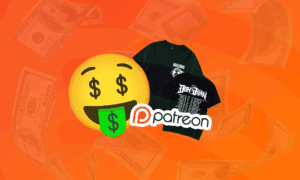
How to Make Money from Music as an Independent Artist
More and more independent artists are asking the same thing in 2025:
How do you actually make money from music?
Not in a vague, motivational way. But in a real, step-by-step, rent-paying kind of way.
The truth is, making money from music is 100% possible - and many artists are already doing it. You don’t need a label, a manager or a viral TikTok. What you do need is a better understanding of where the money really comes from, and how to build a system that turns casual listeners into loyal, paying fans.
In this post, we’re going to break down exactly how to make money from music as an independent artist, even if you’re just starting out.
The Four Main Revenue Streams for Independent Artists
Let’s start by zooming out. Here are the four main ways most indie artists eventually make money:
- Streaming royalties
- Publishing and sync licensing
- Live shows and touring
- Audience monetization
The first three are real, but they take time to scale:
- Streaming royalties only become meaningful once you’re hitting over 1 million monthly listeners.
- Publishing/sync deals pay out once you start landing placements in TV, film, games, or radio.
- Live shows start making real money when you can consistently sell out 300–500+ cap venues.
But the fourth - audience monetization - is where most artists see income first.
What Is Audience Monetization?
In simple terms, audience monetization is about earning money directly from your fans.
This could be through:
- Merch sales
- Fan subscriptions (Patreon, Bandcamp, Discord, etc.)
- Direct-to-fan digital sales
- Exclusive content or experiences
But here’s the problem: Most people throw around “monetize your audience” like it’s obvious, but nobody shows you how to actually do it.
That’s where the concept of a music marketing funnel comes in.
The Music Marketing Funnel: From Listener to Customer
If you want to make money from music, you need a system that consistently moves strangers toward becoming real fans who want to support you. That system is called a funnel.
There are 3 basic stages:
1. Awareness
This is where someone hears your music for the first time. Maybe it’s on a Spotify playlist, an Instagram reel, or a TikTok. That moment is exciting, but it’s just the starting point.
If you stop here, most of those listeners will never return.
2. Nurturing
Nurturing means turning those casual listeners into real fans. Think:
- Email newsletters
- Exclusive content
- Discord servers
- Weekly livestreams
The goal is to create familiarity. Show people more of who you are. Build a connection.
3. Monetization
Once someone feels connected to your world, they’re much more likely to buy something - not because you’re “selling” to them, but because they want to support you.
You’re not pushing products, you’re offering cool stuff to people who already care.
Two Proven Ways to Monetize a Small Fanbase
1. Limited-Run Merch Drops
You don’t need a big fanbase to sell merch. You can set up a simple online store with Shopify and use a print-on-demand service like Printful to sell t-shirts, hoodies or posters with no upfront costs. When you're just starting out, making your merch drops limited, exclusive and time-sensitive is a great strategy.
2. $3/Month Fan Club
You can use a fan subscription platform like Patreon to launch a low-cost fan club. Offer:
- Behind-the-scenes videos
- Unreleased demos
- Livestream access
- Discount codes for merch or tickets
You don’t need thousands of fans to do this. Just 300 fans paying $3/month = $900/month. That’s money to reinvest in your next release.
Selling Doesn’t Have to Feel Sleazy
If the idea of “selling” makes you cringe, remember this:
Real fans want to buy from you.
They want your hoodie. They want your demo tapes. They want to support the music they love.
All you have to do is give them a way to do that.
Recap: How to Make Money from Music
To start earning money from your music as an indie artist:
- Understand that streaming alone won’t pay the bills early on
- Focus on audience monetization first
- Build a music marketing funnel: Awareness → Nurturing → Monetization
- Use low-cost tools to offer exclusive merch or subscriptions
- Keep showing up and nurturing your fans consistently
Making money from music is not a mystery. It just takes the right strategy, a little patience, and consistent execution.
Where Spin Promo Fits Into This
Spin Promo helps artists grow at the awareness and nurturing stages of the funnel.
We get your music in front of the right listeners through verified Spotify playlist placements. Then we retarget those listeners with Spotify Ads, so they come back, follow, and start moving deeper into your world.
It’s not a magic bullet. But it’s a system that works. You can learn more at: https://spin.promo/
How to Actually Trigger the Spotify Algorithm in 2025
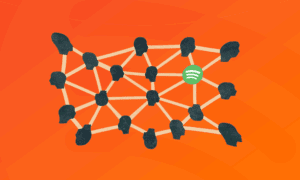
How to Actually Trigger the Spotify Algorithm in 2025
If you’ve ever wondered how some artists seem to blow up overnight on Spotify while others struggle to get past a few hundred streams, the answer is often the same:
They triggered the algorithm.
Spotify’s algorithm isn’t just a mysterious black box. It’s a powerful recommendation engine that can expose your music to thousands of potential fans - if you know how to feed it the right signals.
The good news? You don’t need a label, a massive budget, or a viral TikTok. What you do need is a clear understanding of how the algorithm works, what triggers it, and how to structure your release strategy around it.
In this guide, we’ll break down:
- How the Spotify algorithm actually works in 2025
- What it’s looking for in your song and artist profile
- What you can do before and after release to activate it
- The specific actions that increase your song’s visibility in algorithmic playlists like Discover Weekly, Release Radar, and Daily Mix
Whether you’re launching your first single or trying to scale your growth, this guide will help you move beyond guesswork and start building real algorithmic momentum on Spotify.
Let’s dive in.
🎯 Why the Spotify Algorithm Matters
Spotify’s algorithm is one of the most powerful tools for music discovery in the world. It powers:
- Discover Weekly
- Release Radar
- Daily Mix
- Spotify Radio
- “More Like This” recommendations
Getting picked up by these playlists can lead to thousands of real listeners without paying for ads or chasing influencers. But the algorithm needs clear signals before it will push your track.
That means your job as an artist is to trigger the Spotify algorithm by feeding it the right data.
🤖 How the Spotify Algorithm Actually Works
Spotify uses machine learning models that analyze listener behavior to recommend songs. The core system is known internally as BaRT (Bandits for Recommendations as Treatments).
It tracks hundreds of data points per listener, but the most important for artists are:
🎧 Listening Behavior
- Skips – how many people skip your track within the first 30 seconds
- Repeat Listens – how many people listen more than once
- Listening Time – how far listeners get into your song
- Playlist Adds – how many people add your song to personal playlists
- Saves – how many people save your song to their library
Spotify wants to recommend music that keeps people listening. If your track gets skipped often, it will disappear from algorithmic suggestions. If people listen all the way through, save it, or add it to playlists, Spotify sees that as a green light to push it further.
🔑 The “Song Popularity Index”
Every track on Spotify has an internal score known as a Song Popularity Index, rated from 0 to 100. It is not shown publicly, but it is used to determine whether your song appears:
- In search results
- In algorithmic playlists
- In the “Fans Also Like” section
- In Spotify’s internal pitch tools
And Spotify updates this score based on:
- Total plays
- Saves
- Listener retention
- External traffic sources
- Playlists (algorithmic, editorial, and user-generated)
🧠 What Actually Triggers the Spotify Algorithm?
Here’s what sends the right signals to the algorithm:
✅ Strong Performance in the First 7 Days
- Get as many high-retention streams as possible in the first week
- Encourage saves, follows, and playlist adds
- Avoid fake streams or low-quality, random listeners
✅ Placements in Relevant Playlists
- The algorithm favors songs placed in genre-appropriate third-party playlists
- Irrelevant playlists (e.g. hip-hop in a house playlist) can hurt your data
- High-index third-party playlists (playlists which show up near the top of search results) are often the most consistent growth driver
✅ Retargeting and Re-Engagement
- If someone streamed your track once, show them an ad to bring them back
- Repeat listeners are algorithm gold
- You can use platforms like Spin Promo to make this happen
📈 Practical Ways to Trigger the Algorithm
Here’s how to put all this into practice.
1. Run a Pre-Save Campaign
Use tools like Feature.fm or Hypeddit to let fans pre-save your track. When it drops, those saves fire instantly, giving you a boost on day one.
2. Pitch to Playlists That Actually Fit
You can use platforms like Spin Promo to pitch to user-generated playlists in your genre. Focus on quality over quantity. A good third-party placement sends quality signals to the algorithm.
3. Submit Through Spotify for Artists
Submit every song at least 7 days before release. Even if you don’t land an editorial playlist, you'll feed the algorithm the crucial metadata it needs to correctly categorize your track.
4. Encourage Engagement, Not Just Streams
Focus on marketing tools and channels that deliver engagement, rather than a quick spike in streams. Saves, for example, are one of the most powerful signals for the algorithm.
5. Monitor Performance in Spotify for Artists
Watch your retention rate, skip rate, and source of streams. If 80% of your plays are from personalized playlists and engagement is high, you're likely triggering the algorithm.
6. Use Ads to Retarget Listeners
Someone streamed your song on a playlist? Great. Now show them an ad to follow you or explore your catalog. The algorithm loves it when fans return.
🚫 What Not to Do
- Don’t buy fake streams or submit to botted playlists
- Don’t send cold traffic that doesn’t engage
- Don’t flood your profile with low-effort music just to stay active
Final Thoughts
Triggering the Spotify algorithm is not about gaming the system. It is about creating strong data through great music, clear targeting and smart promotion.
If you want long-term growth on Spotify, focus on:
- Reaching the right listeners
- Encouraging deeper engagement (saves, follows, repeat plays)
- Using tools like playlists, pre-saves, and ads to support every release
Do this consistently and the algorithm will start doing the heavy lifting for you.
Need help building a strategy that feeds the algorithm?
Spin Promo runs campaigns that combine verified playlist placements and retargeted ads, with a strategy designed to trigger the algorithm with high-quality data.
Learn more at https://spin.promo/.
How to Run Meta Ads for Music (Step-By-Step Guide)
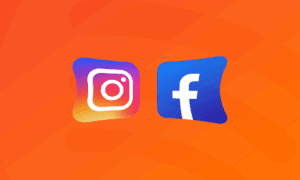
How to Run Meta Ads for Music in 2025 (Step-By-Step Guide)
Meta Ads (the ads you see whilst scrolling on Facebook and Instagram) are still one of the best tools to grow your music in 2025. They let you:
- Reach new people who haven’t heard of you yet
- Reconnect with listeners who clicked your links or watched your videos
- Send fans to your Spotify, mailing list, merch, or ticket page
- Build real momentum around a release, not just random streams
When done right, Meta Ads aren’t just about “gaining streams"- they’re about creating real fans.
This guide will walk you through how to run Meta Ads for music, with clear steps, creative tips and campaign examples that work.
🎬 Step 1: Set Up Your Meta Ads Infrastructure
Before you can run your first ad, you need to get your Meta tools connected. Here's how:
✅ 1. Create a Meta Business Account
This gives you access to Meta Ads Manager, where all real campaign building happens (not Boost Post).
How to do it:
- Go to business.facebook.com
- Click “Create Account”
- Enter your name, business name (use your artist name), and email
- Click confirm and check your inbox to verify
You now have access to Meta Business Manager (aka your command center).
✅ 2. Link Your Facebook Page & Instagram Account
Meta Ads require you to have a Facebook Page connected to run Instagram ads.
To connect:
- Inside Business Manager, go to Business Settings > Accounts > Pages
- Click “Add Page” (select your artist Facebook page)
- Then go to Business Settings > Accounts > Instagram Accounts
- Click “Add” and log in to your Instagram profile
Now your Facebook and Instagram are both connected to your ad account.
✅ 3. Create a Meta Ad Account
If this is your first time, you’ll need to set up a new ad account. Here's how:
- Go to Business Settings > Ad Accounts > Add New Ad Account
- Give it a name (e.g. “[Your Artist Name] Music Ads”), set your country and currency, and confirm.
- Assign yourself (and any teammates) as an admin on the ad account.
✅ 4. Set Up the Meta Pixel
The Meta Pixel is a piece of code that tracks people who visit your landing page (smart link, website, etc.). This lets you build custom audiences and measure conversions.
To create your Pixel:
- Go to Events Manager inside Business Manager
- Click “Connect Data Sources” > Web > Meta Pixel
- Name your Pixel (e.g. “[Artist Name] Pixel”)
- Click Continue and follow the prompts
You’ll get a Pixel ID and installation options.
✅ 5. Add the Pixel to Your Landing Page (Smart Link)
If you’re using platforms like Feature.fm, Hypedit, or Toneden, you can easily paste your Pixel ID to track traffic.
Example (Feature.fm):
- Go to your landing page settings
- Find the “Add Facebook Pixel” option
- Paste your Pixel ID and save
🧠 Why this matters: When someone clicks your ad and lands here, Meta tracks it. You can now build retargeting audiences based on this traffic.
✅ 6. Use a Smart Link with UTM Tracking
Always use a smart link, not a direct Spotify link. This gives you:
- Better click tracking
- Streamlining across Spotify, Apple, YouTube, etc.
- UTM parameters (to see where fans come from)
Popular tools for this:
- Feature.fm (easy Facebook Pixel integration)
- Hypeddit
- Toneden
🧠 Tip: Use these in your Spotify for Artists dashboard or Google Analytics to see which ads drive real traffic.
✅ 7. Create a Custom Audience for Retargeting
Once your Pixel is installed and your link is live, start building your first custom audience.
Go to Ads Manager > Audiences and create a new:
- Website Custom Audience: People who visited your smart link or landing page
- Video Views Audience: People who watched 50%+ of your last video ad
- Instagram/Facebook Engagement Audience: Anyone who interacted with your posts
You’ll use these for future campaigns to retarget people who already showed interest.
✅ You're now ready to run your first ad!
🚀 Step 2: Build Your First Meta Ad Campaign
Now that everything’s set up (Pixel, smart link, tracking), it's time to create your first campaign. Follow this process exactly and you’ll be way ahead of most artists running ads.
✅ 1. Go to Meta Ads Manager
Head to adsmanager.facebook.com. You’ll see a screen with three levels:
Campaign | Ad Set | Ad
Think of this as your campaign’s structure:
- The Campaign is the overall goal
- The Ad Set controls your audience, budget, and placements
- The Ad is your creative (video, caption, call-to-action)
✅ 2. Create a New Campaign
Click the green “Create” button and choose your campaign objective.
Note: We recommend using the Conversion objective as it allows Meta to optimize your campaign based on high-intent actions like clicking the streaming link on your landing page.
Click Continue.
✅ 3. Name Your Campaign
Give it a clear name you’ll recognize. Example:
"April 2025 Single – UK Indie – Conversions"
Leave everything else as-is (no need for special settings yet) and click Next.
✅ 4. Set Up Your Ad Set (Audience, Budget, Link)
Now that your campaign is created and your objective is Conversions, it’s time to set up the Ad Set - the engine that determines who sees your ad, where they see it, how much you spend, and what counts as a conversion.
🎯 Optimization: Conversions (Click to Spotify via Smart Link)
You’ll be optimizing for people who click the Spotify button on your smart link (Feature.fm, Hypeddit, etc.).
Here’s how to do it:
→ In your smart link tool, make sure your Meta Pixel is installed and firing on page load
→ Enable event tracking for button clicks (Feature.fm and Hypeddit both support this)
→ In Ads Manager, choose Conversion Location: Website
→ Choose the Pixel event to optimize for:
If set up correctly, it may say something like Button Click or View Content
If not, use “View Content” as a fallback - it still tracks link landings
🧠 Why this works: Meta will find people most likely to not just click your ad, but actually click through to Spotify. That’s a much higher-quality signal.
🧍 Choose Your Audience
Now choose who you want to reach. Start with cold targeting if this is your first campaign.
Recommended starting setup:
- Age: 18–45
- Locations: Tier one countries like US, UK, Canada, Germany, Australia
- Language: English (or your lyrics language)
- Interests: Choose 1–2 related to similar artists or genres (e.g. Bonobo, SZA, alt-R&B)
🧠 Tip: Don’t stack 10+ interests. Start narrow so Meta can learn fast.
Once you’ve run a few campaigns, you’ll be able to create Custom Audiences (e.g. video viewers, website visitors) and Lookalikes to improve targeting.
💰 Set Your Budget
Start small: $10–15/day per ad set.
Let it run for at least 3–5 days to allow Meta to fully exit the learning phase and start optimizing effectively.
📱 Placements: Manual
Use Manual Placements so your ad only shows where it makes sense for music content.
We recommend:
- Instagram Feed
- Instagram Reels
- Facebook Feed
- Facebook Reels
Turn off:
- Audience Network
- Messenger
- In-Article and right column
🔗 Conversion Destination: Your Smart Link
Paste your smart link (e.g. from Feature.fm, Hypeddit, or Toneden) as your Website URL.
This is where the conversion happens - when someone clicks from your smart link to Spotify (or their preferred platform).
🧠 Pro Tip: Make Spotify the first option or pre-selected on your landing page to maximize conversion.
Click Next to move to the ad creation.
✅ 5. Create Your First Ad
Here’s where the magic happens.
🖼 Upload Your Creative
Choose “Single Image or Video” and upload a short vertical video — ideally 15–30 seconds, 9:16 ratio.
What works best:
- Visualizer with your song’s hook
- A lyric snippet with captions
- Raw footage of you performing, reacting, or explaining the song
- Anything personal, short, and emotionally engaging
✍️ Write Your Caption
Keep it short and clear. No need to explain your life story.
Examples:
- “My new track just dropped. Give it 30 seconds.”
“If you like [Artist X], you might like this.”
“Out now – stream it if you feel this vibe.”
Use 1–2 lines. Add emojis only if they fit your brand.
🔘 Call-to-Action
Select a CTA like:
- Listen Now
- Learn More
- Watch More
Meta will show a button below your ad based on your choice.
🧠 Pro Tip: Use the Preview tool to see what your ad will look like in-feed.
✅ 6. Review and Publish
Double-check:
- The right Pixel is selected
- You’re sending people to the correct smart link
- Your budget is correct
- Your creative looks great
If everything looks good, you're ready to hit “Publish”!
🎉 Congrats - you’ve officially launched your first music ad campaign like a pro.
What Happens Next?
Now that your ad is live:
- Don’t touch it for at least 72 hours (let it gather data)
- Monitor clicks, CTR, and video views
- After 3–5 days, duplicate the best performers and scale slowly
- Retarget your engagers in your next campaign
In the next section, we’ll walk you through optimization strategies - how to scale, when to kill an ad, and how to test creative without wasting your budget.
⚙️ Step 3: Optimize and Scale Your Meta Ads
Launching a campaign is just the beginning. The real growth comes from knowing what to watch, what to change, and when to scale.
Here’s how to optimize your Meta Ads for music the right way in 2025.
✅ 1. Let Your Ads Run (Learning Phase)
Once your campaign goes live, do not touch it for the first 3 days.
Meta needs time to “learn” what’s working - it’s called the learning phase. During this time, avoid:
- Editing the ad
- Changing the budget
- Swapping creative or audience
🧠 Tip: Let it gather data for at least 72 hours before making changes.
✅ 2. Track Your Key Metrics
After the learning phase, check performance in Ads Manager.
Focus on these 3 numbers:
- CTR (Click-Through Rate): % of people who saw your ad and clicked (anything above 0.5% is solid when you're starting out)
- CPC (Cost Per Click): What you paid for each click (anything under $1.00 is a good starting point)
Other useful stats:
- Landing Page Views (how many actually waited for your smart link to load)
- Button Clicks (from Meta’s tracking of the CTA)
If your numbers are low, don’t panic - it just means it’s time to test something new.
✅ 3. Kill or Improve Underperforming Ads
If an ad has:
- CTR under 0.5%
- CPC over $1.50
… it’s probably not worth keeping.
Here’s how to fix it:
- Swap the creative: Try a different song part or shorter hook
- Change the caption: Simplify your message
- Narrow your audience: Cut weak countries or broad interests
- Refresh your smart link if bounce rate is high
✅ 4. Scale What’s Working (Carefully)
When you find a winning ad, don’t just crank the budget.
Instead:
- Duplicate the ad set (don’t edit the original)
- Increase the budget on the new version by 10–20%
- Monitor for 2–3 days, then scale again
This keeps the performance stable while you spend more.
✅ 5. Build Your Retargeting Funnel
Once you’ve run a few campaigns, you can start retargeting warm fans.
In Ads Manager > Audiences, check your:
- Video View Audience: People who watched 50%+ of your last video ad
- Website Visitor Audience: People who clicked your smart link
- Engagement Audience: People who liked, commented, or saved your IG posts
Then, build a retargeting campaign just for these fans.
What to promote:
- Your next single
- Pre-save or EP drop
- Merch, shows, or exclusive content
🧠 These are your most likely superfans (and the cheapest to reach).
✅ 6. Keep Testing (Always)
Meta Ads never stay perfect. Keep improving by testing:
- New video clips or formats (e.g. performance vs visualizer)
- Different CTAs (e.g. “Listen Now” vs “Stream It First”)
- Audiences based on geography, genre, or artist interests
Run small tests, kill what fails, scale what works.
🚀 What Success Looks Like
You’ll know your campaign is working when you start to see:
- Streams going up in Spotify for Artists (especially from ad-targeted countries)
- Follower growth on Instagram or Facebook
- People saving your track or messaging you directly
- Better results each time you run a new campaign
Final Thoughts: Should You Run Meta Ads for Music?
Yes - but only if you're willing to invest time and money into getting them right. For a lot of artists, high-index playlisting and Spotify ads are an easier, more viable options for fan base growth.
And above all, meta ads should make up one part of your overall Spotify marketing strategy. If you want to dive deeper, check out our full Spotify Music Promotion guide here.
How to Advertise Music on Spotify in 2025
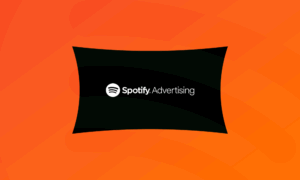
How to Advertise Music on Spotify in 2025
Learning how to advertise music on Spotify is one of the most direct and effective ways to grow your audience as an independent artist.
It’s not just about exposure, Spotify Ads help you:
- Put your music in front of the right listeners at the right time
- Reconnect with people who’ve already streamed your music
- Trigger Spotify’s algorithm with engaged traffic
- Build momentum around new releases or breathe life into older tracks
And unlike social ads, you’re meeting listeners where they already go to discover new music right inside Spotify.
🛠 Two Ways to Advertise Music on Spotify
Spotify now offers two primary advertising routes for musicians:
Spotify Ad Studio – great for self-serve audio and video ads
Spotify Campaign Kit – includes artist-first tools like Marquee and Showcase
Let’s break both down.
🎙 Option 1: Spotify Ads Manager
Spotify Ads Manager is a self-serve ad platform available to anyone, inclyding brands, artists, or managers. It lets you create audio or video ads that play to free-tier users on Spotify.
What You Can Advertise:
- A new single or album
- A Spotify playlist
- Your artist profile
- A presave or concert link
Ad Formats:
- Audio Ads (15–30 seconds): Paired with clickable images and calls-to-action
- Video Ads: Displayed during active sessions
- Sponsored Sessions: Users watch a video for 30 minutes of ad-free listening
How to Get Started:
→ Go to Spotify Ads Manager
→ Choose your campaign goal and targeting
→ Upload or create your ad
→ Set your daily budget and schedule your campaign
🚀 Option 2: Spotify Campaign Kit (Marquee & Showcase)
Campaign Kit is built specifically for artists and available through Spotify for Artists. These native ad tools are optimized for music promotion, not general brand exposure.
🔥 Marquee
- A full-screen, in-app pop-up that promotes your new release to fans, followers, and recent listeners.
- Drives first-week streams and re-engages your base
- Appears when fans open Spotify
- Tracks open rates, listening behavior, and engagement
Best for: New singles, EPs, or album releases (especially during release week).
Eligibility: You must meet certain follower and stream benchmarks. Spotify will notify you when you’re eligible.
📣 Showcase
Showcase places your track in Spotify’s Home feed with a banner-style promo that targets new potential fans.
- You can choose your genre, country, and release type
- Great for promoting a standout track or reviving an older release
- Available on both mobile and desktop
Unlike Marquee, Showcase doesn’t require a brand-new release.
🎯 Targeting Tips When You Advertise Music on Spotify
Spotify gives musicians access to detailed targeting based on:
- Genre
- Location (country, region, or city)
- Age and platform (iOS, Android, desktop)
- Listener behavior (for Marquee/Showcase campaigns)
🧠 Pro tip: Use narrow targeting to test who actually responds to your music with a small budget, then scale up what works.
✅ Pros of Advertising Music on Spotify
- Listeners are already in music discovery mode
- Ad placements are native to the platform (not disruptive)
- Genre-based targeting is highly relevant for artists
- Marquee and Showcase are built specifically for stream growth
- Can directly impact Release Radar + algorithmic performance
❌ Cons of Advertising Music on Spotify
- Ads ran via Ads Manager only reach free-tier users (Premium users don’t hear/see them)
- Marquee access requires eligibility (not available to all artists)
- Click-through behavior is limited (Spotify doesn't allow deep tracking)
- Costs can rise if targeting is too broad or unfocused
Final Thoughts: Should You Advertise Music on Spotify?
Spotify Ads give you a direct line to listeners where it matters most: on the actual platform your music lives.
But to achieve real success on Spotify, it's important to combine ads with smart playlisting, an algorithmic triggering strategy and profile optimization. Click here to dive deeper with our full Spotify Music Promotion guide.
Need Help Running a Spotify Ad Campaign?
At Spin Promo, we combine proven playlist promotion with targeted Spotify Ads to help independent artists build long-term traction.
→ Explore Spin campaign options
How to Build a Winning Spotify Artist Profile in 2025
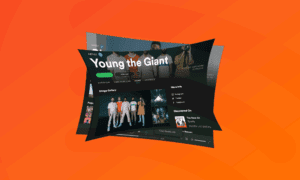
How to Build a Winning Spotify Artist Profile in 2025
Most independent artists focus on the music and overlook their Spotify profile. But in 2025, your Spotify artist profile is one of your most powerful marketing tools.
Here’s why:
- It’s the first thing people see when they click your name from a playlist, ad, or search result
- It helps convert casual listeners into followers, savers, and long-term fans
- Spotify tracks user engagement on your profile, and that data feeds directly into the algorithm
- If your music is good, your profile should seal the deal, not send people away.
This guide walks you through how to optimize your Spotify artist profile so it actually works for you.
Step 1: Claim Your Spotify for Artists Profile
Before anything else, make sure you’ve claimed your artist profile via Spotify for Artists.
Once you’re in, you can:
- Customize your header image, avatar, and bio
- Add links to social media, merch, and concert listings
- Access real-time streaming data and audience insights
- Submit upcoming releases for editorial playlist consideration
✅ Pro tip: Claim your profile as early as possible after uploading your first release through a distributor.
Step 2: Choose a Strong Header Image
Your header image is the visual top of your profile. This is prime real estate.
What works in 2025:
- A clean, high-resolution image
- Consistency with your artist branding and release artwork
- Something that visually reflects your sound and vibe
Avoid:
- Blurry, pixelated images
- Random stock art that says nothing about your identity
- Outdated promo shots that don’t match your current release
🧠 Remember: If your music sounds like dark indie folk but your header looks like a tropical house DJ, you’re sending mixed signals. Make it cohesive.
Step 3: Write a Bio That Connects (Fast)
Listeners don’t come to your bio to read your life story. They come to decide if you’re worth following.
Here’s a simple format that works in 2025:
- One sentence about your sound or genre
- One sentence about what you’re working on right now
- One personal or unexpected detail to create connection
Example:
Atmospheric indie rock from Detroit.
New EP Haunted Youth just dropped.
Grew up on Nirvana, now raising two kids and a synth collection.
You can write in first person or third, just make sure it feels like you.
Step 4: Use the “TXT ME” Hack to Drive Deeper Engagement
By design, Spotify buries your social links in the “About” tab on your Spotify artist profile. Most listeners won’t even see them.
But there’s a simple workaround:
Put a text number directly in your bio.
Example:
TXT ME: 101-8291-281
When someone texts that number, you can:
- Reply with your Instagram or TikTok
- Send a pre-save link for your next release
- Share a signup link to your email list
- Start a direct conversation with a potential fan
Not comfortable using your real number? You can use a service like Klaviyo or Community to automate replies and segment your audience so you're not glued to your phone, but your fans feel like you're responding personally.
Step 5: Pin a Playlist to Control the Listener Journey
One of the most underrated tools on your Spotify artist profile is the ability to pin a playlist. This lets you guide listeners through your world, not just your discography.
Start by curating a playlist that includes:
- Your own tracks
- Songs from artists you’re influenced by
- Songs in the same vibe or genre as your latest release
Spotify loves when artists use the platform this way. More time spent on your profile = stronger data = better algorithm traction.
Step 6: Keep Your Profile Updated
An outdated profile sends the wrong message. Even if you’re not releasing constantly, check in every month or so to:
- Refresh your bio (mention upcoming releases or shows)
- Update your pinned playlist
- Add any new press photos or links
Active profiles show Spotify - and your fans - that you’re serious.
Final Thoughts
Your Spotify artist profile isn’t just a streaming page. It’s your digital handshake. In 2025, with more competition than ever, your profile needs to pull its weight.
When optimized properly, it doesn’t just look good - it supports your playlist efforts, powers your ads, and strengthens your algorithmic reach.
👉 Want to take the next step? Check out our full Spotify Music Promotion Guide here.
Or if you want help running a professional Spotify campaign that combines playlisting and ads, click here to learn about Spin Promo.
Best Spotify Promotion Services Compared (2025)
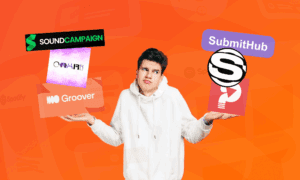
Best Spotify Promotion Services Compared [2025]
In 2025, the landscape of Spotify promotion services is more crowded than ever. For every reputable company offering real value, there are dozens that promise the world and deliver nothing. That’s why we created this guide: to help you navigate the noise and invest in strategies that actually move the needle.
Below, we’ve broke down the best Spotify promotion services based on transparency, results, pricing, and how well they help indie artists build long term growth (not just vanity metrics).
1. Spin Promo
Overview: Spin Promo offers done for you campaigns that combine targeted playlist pitching with Spotify Ads. Campaigns are focused on real listener engagement and include in-depth audience targeting, real-time data tracking and real results or your money back.
Best For: Artists looking for a comprehensive promotion strategy that includes playlisting and ads.
Key Features:
- Combined playlisting + Spotify Ads
- Real time reporting dashboard
- High-index playlists with active, vetted followers
- Strategic audience targeting
Pricing: Packages starting at $209 (with the first-time user discount applied)
Pros:
- Highly targeted campaigns
- Transparent data and real listener growth
- Combines multiple growth channels in one package
Cons:
- Not a quick fix or overnight success (emphasizes sustainable growth)
2. Playlist Push
Overview: Playlist Push connects artists with over 4,000 verified curators across Spotify and TikTok, using an AI based matching system to target the right playlists.
Best For: Artists seeking visibility through a wide curator network and TikTok integration.
Key Features:
- AI matching system
- Campaign performance dashboard
- Spotify and TikTok targeting
Pricing: Starts at $300
Pros:
- Large curator network
- Cross platform promotion (Spotify + TikTok)
Cons:
- High cost barrier for new artists
- Results can vary widely
3. Groover
Overview: Groover is one of the fastest growing Spotify promotion services, and allows artists to pitch music directly to curators, blogs, radio stations, and labels with guaranteed feedback within 7 days.
Best For: Artists looking for real curator interaction and honest feedback.
Key Features:
- Direct to curator submissions
- Feedback guaranteed on every pitch
- Global network of industry professionals
Pricing: $2 - $10 per curator submission
Pros:
- Transparent and scalable
- Useful for relationship building
Cons:
- Placements not guaranteed
- Pricing can add up quickly with multiple submissions
4. SubmitHub
Overview: One of the original Spotify promotion services, SubmitHub lets you pitch songs to curators, blogs, influencers and more, with optional premium credits for guaranteed responses.
Best For: DIY artists looking for budget friendly playlist outreach.
Key Features:
- Free and paid submissions
- Curator feedback
- Playlist, blog, influencer, and label access
Pricing: Free or $1-$3 per premium submission
Pros:
- Affordable for beginners
- Wide range of submission types
Cons:
- High competition
- Many curators decline without detailed feedback
5. SoundCampaign
Overview: SoundCampaign helps artists submit music to genre specific Spotify playlists. Campaigns are reviewed by curators who give placement decisions and short feedback.
Best For: Artists looking for genre matched pitching and structured reports.
Key Features:
- Genre targeting
- Placement and feedback tracking
Pricing: Starts at $69 per campaign
Pros:
- Transparent campaign reporting
- Niche genre support
Cons:
- Placement not guaranteed
- No curator relationship building
6. Omari MC
Overview: Omari MC provides a range of Spotify promotion services, including organic playlist promotion, YouTube ads, and social marketing. Campaigns are tailored based on genre and target audience.
Best For: Artists who want custom, cross platform promo with a personal touch.
Key Features:
- Organic growth focus
- Custom built campaigns
Pricing: Starts at $77
Pros:
- Personalized approach
- Covers multiple channels beyond Spotify
Cons:
- Not every genre is supported
- Less transparent playlisting process
Final Thoughts
There’s no one size fits all solution when it comes to Spotify promotion services. Some artists need help with everything from pitching to ads while others want to do it themselves with the right tools.
If you’re looking for a high impact, multi channel strategy that focuses on real growth, Spin Promo stands out as a strong choice in 2025. But if you prefer a DIY path or want to test several routes, platforms like SubmitHub, Groover, and Playlist Push also have real value.
The key is knowing your goals, avoiding shortcuts and picking partners who prioritize real listeners not just numbers. And don't forget to check out out full Spotify Music Promotion guide to see how these services can fit into your overall Spotify promotion strategy.
How to Get on Spotify Playlists in 2025
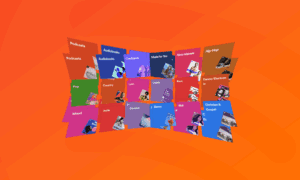
How to Get on Spotify Playlists in 2025
Getting on Spotify playlists in 2025 is still one of the most powerful ways to grow your audience and trigger the algorithm - but it’s also one of the most misunderstood parts of Spotify marketing.
Everyone talks about playlists, but few artists understand what actually gets a track placed, or what kind of playlists matter most. Submitting to the wrong curators or chasing low-quality placements can waste time and money and do nothing to help you grow.
This guide breaks down exactly how to get on the right playlists, what’s changed in 2025, and what you can do to increase your chances of being added to playlists that actually matter.
What Types of Spotify Playlists Exist in 2025?
There are three main types of playlists on Spotify:
1. Editorial Playlists
These are curated by Spotify’s in-house editors. Think ‘Fresh Finds’, ‘New Music Friday’, or ‘RapCaviar’. Getting on one of these can explode your numbers overnight, but the competition is steep. You typically need strong performance data, press coverage, or existing momentum to be considered.
2. Algorithmic Playlists
These are personalized by Spotify’s algorithm and include playlists like ‘Discover Weekly’, ‘Release Radar’, ‘Radio’, and autoplay recommendations. They are based on listener behavior, and they’re triggered when Spotify’s data shows that your track is resonating - that means low skip rates, high save rates, and consistent engagement.
3. User-Curated Playlists
These are created by individual users or brands. Some have thousands or even millions of followers. Many indie artists break through via user-curated playlists first. These lists are more accessible than editorial or algorithmic options, especially if you target curators aligned with your genre.
Step 1: Optimize Your Spotify Profile
Before pitching to any playlists, your profile should be ready to convert new listeners into fans. First impressions matter.
That means:
- A clean, professional artist photo and banner
- A short, compelling bio
- Your latest release pinned as the Artist Pick
- A custom artist playlist featuring your best songs or your influences
- All your social links connected and clickable
Your profile is your storefront. If it doesn’t look legit, curators (and listeners) will likely move on.
Think of it as your landing page designed to turn casual visitors into engaged followers.
Step 2: Submit to Spotify Editorial Playlists (Long Shot But Worth It)
You can use Spotify for Artists to pitch unreleased music at least 7 days before the release date.
When submitting, be specific. Choose accurate genres, moods, instruments and cultural contexts. Add a short pitch explaining the story behind the track, recent momentum (press, playlisting, fan engagement), and why the song matters.
Editorial placements are rare, but this process still helps Spotify’s internal systems categorize your track correctly and set you up for algorithmic success, so it's always worth doing.
Step 3: Target High-Quality User-Curated Playlists
User-curated playlists are the most direct and accessible way to get your music in front of new listeners. But quality matters far more than quantity.
Look for playlists that:
- Are updated regularly
- Have active, engaged audiences
- Match your genre, mood, and style
IMPORTANT: Be sure to use tools like Artist.Tools or Chartmetric to make sure a playlist isn't botted before you consider pitching. Botted playlists (where streams are generated via fake Spotify accounts) can inflate your numbers without offering any real engagement. Worse, they also often result in getting your music flagged or removed from Spotify.
Step 4: Send a Smart, Respectful Pitch
Once you’ve identified solid playlists, the pitch is where most artists blow it. Keep it brief, polite, and personal.
Your message should include:
- A streaming link (preferably a smart link or Spotify link)
- A 1–2 sentence description of the track (genre, vibe, theme)
- Why you think it fits their playlist
Don’t beg, and don’t spam. Treat playlist pitching like professional networking, because that’s exactly what it is.
Step 5: Build and Grow Your Own Playlists
You don’t need to rely entirely on other people’s playlists. Creating your own playlists is a long-term strategy that builds discovery over time.
Start a playlist based on your niche - whether that’s your genre, a mood, or a theme - and include your own tracks alongside artists your audience already loves. Share it on social media, embed it on your site and run occasional ads to grow followers.
Over time, your playlists can become a reliable source of streams and even a platform to promote your future releases.
Final Thoughts
Getting on Spotify playlists in 2025 isn’t about hacks or quick wins, it's about landing placements that help build a long-term audience that sticks with you.
And remember - playlisting is only one piece of a winning Spotify music promotion strategy.
Want us to do this for you?
If you’d rather focus on making music while someone else handles the promotion, we can help. At Spin Promo, we provide targeted playlist pitching and Spotify Ad campaigns designed to build real fanbases, with transparent reporting and data you can trust.
We’ve helped over 3,000 independent artists land playlist placements and gain traction on Spotify. Whether you’re starting from zero or trying to scale an existing release, we’ll help you connect the dots and build the kind of momentum that actually moves the needle.
Learn more here: https://spin.promo/
Spotify Music Promotion in 2025: The Ultimate Guide
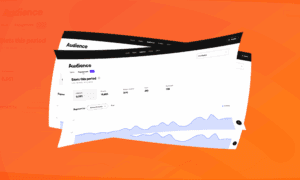
Spotify Music Promotion in 2025: The Ultimate Guide
If you're an independent artist trying to grow on Spotify in 2025, you're not alone. Between shady promo services, bottled playlists, and an algorithm that can seem impossible to crack, the path to real growth often feels like guesswork.
This guide is here to change that.
You’ll learn exactly how Spotify music promotion works today: what matters, what’s changed, and how to promote your music effectively without wasting money or chasing gimmicks.
What Is Legit Spotify Music Promotion?
Real Spotify music promotion is about putting your music in front of the right listeners - people who are likely to enjoy your sound, follow you, and come back for more. It’s not just about racking up streams or chasing algorithm bumps. Effective promotion combines curated playlist placements, targeted advertising, and fan-building strategies to drive lasting engagement and real growth.
In 2025, successful Spotify promotion means going beyond vanity metrics. It’s about reaching the right audience, triggering the algorithm in your favor and building momentum that actually supports your long-term career.
What Are the Main Strategies for Spotify Music Promotion?
Organic Promotion – Sharing your music through socials, email lists, blogs, influencers and fans.
Playlist Promotion – Getting featured on user-curated, editorial, and algorithmic playlists.
Paid Ads – Running campaigns on platforms like Instagram, TikTok, or directly on Spotify to drive traffic.
Why Spotify Promotion Still Matters in 2025
Spotify is still the dominant platform for music discovery. With over 600 million users, including 236 million paying subscribers, it’s where most listeners first encounter new music.
But Spotify has also become incredibly crowded. With over 100,000 new tracks uploaded every day, standing out is harder than ever.
To rise above the noise in 2025, artists need smart, intentional promotion strategies that go beyond short-term stream spikes and actually build long-term fan engagement.
Building a Spotify Artist Profile That Converts
Before anything else, you need a profile that sets the tone. Your profile is often the first thing someone sees after hearing your music on a playlist or ad — and if it’s empty or forgettable, you’ve just lost them.
- A strong Spotify artist profile in 2025 should:
- Communicate your sound and identity clearly (through visuals, bio, and links)
- Show you’re active and invested in your music
- Give new listeners an easy way to explore more and follow you
👉 Read: How to Build a Winning Spotify Artist Profile
The Best Spotify Promotion Strategies in 2025
1. Third-Party Playlisting
Third-party playlisting involves getting your music placed on user-curated Spotify playlists through outreach, submissions, or paid promotion. These playlists aren't owned by Spotify but are followed by real listeners who actively discover new tracks through them. Platforms like Spin Promo, SubmitHub, Groover and other curated promotion services make it easier to pitch your songs to these playlist owners.
When done well, playlist placements can lead to genuine streams, saves, and follows. A song added to the right playlist can help kick off a chain reaction, boosting visibility and signaling to Spotify’s algorithm that your track is worth recommending. However, success depends on the quality of the playlist and the audience it attracts.
The downside? Not all playlists are created equal. Some are botted or filled with disengaged followers, and many charge high prices for limited exposure. It’s critical to vet every playlist, check follower growth, and track engagement metrics after placement.
Used in combination with other strategies, third-party playlisting can still be one of the most effective ways to get early traction for your music. Just don’t rely on it as your only move.
👉 Read: How to Get on Spotify Playlists in 2025
2. Spotify Ads
Spotify offers built-in advertising tools like Ad Manager and Campaign Kit to help artists promote their music directly on the platform.
These tools give you direct access to listeners while they’re already in music discovery mode. Unlike social ads, Spotify ads reach people while they’re actively engaged with audio content, which can lead to stronger conversion rates and more authentic fan engagement.
However, the tools come with limitations, and they can be expensive if your targeting or creative isn’t dialed in. It’s easy to waste budget if you don’t know who you’re reaching or why.
That said, for artists with a bit of budget and a willingness to learn, Spotify ads are a powerful way to re-engage existing fans, boost new releases, and create an upward spiral of engagement inside the app.
👉 Read: How to Advertise Your Music on Spotify in 2025
3. Meta Ads (Facebook & Instagram)
Meta ads - delivered through Facebook and Instagram - are still one of the most powerful ways to drive traffic to your Spotify profile. These ads give you complete control over targeting, letting you reach potential fans based on interests, behaviors, and lookalike audiences built from your current listeners or email list.
To run an effective Meta ad campaign, you’ll typically direct users to a smart link or landing page that leads them to your Spotify release. From there, conversions like streams, saves, and follows help train Spotify’s algorithm and build your presence organically.
The biggest challenge is the learning curve. Running Meta ads well takes time, testing, and quality visuals or video content that actually grabs attention. Poor creative or vague targeting can burn through a budget fast without meaningful results.
Still, when executed correctly, Meta ads are extremely scalable and cost-effective. They’re especially useful for building long-term audiences you can retarget later with new releases, tours, or merch offers.
👉 Read: How to Run Meta Ads for Music
Using Spotify Music Promotion To Trigger The Algorithm
The Spotify algorithm is what powers features like Discover Weekly, Release Radar, and On Repeat. These are algorithmic playlists shown to users based on their listening behavior, and they’re one of the most powerful tools for growing an audience organically.
In 2025, Spotify’s recommendation system (known internally as BaRT) looks at:
- Skip rate (low skips = good signal)
- Listening time (especially getting past the 30-second mark)
- Save rate and playlist additions
- Profile engagement (clicks, shares, follows)
- Relevance to similar artists and genres
What this means: Every listener interaction counts. The more relevant and engaged your audience is, the more your track gets pushed.
This is why playlist strategy and audience targeting matter so much. When you drive the right listeners to your track (and they engage naturally) you start feeding the algorithm what it wants.
👉 Read: How to Trigger the Spotify Algorithm in 2025
Common Myths About Spotify Music Promotion
Myth #1: Spotify music promotion services are scams
Truth: While the industry has its share of bad actors, not all Spotify music promotion services are scams. The difference lies in transparency and intent. Legitimate services are upfront about how they operate and focus on driving real engagement, not just inflated stream counts. If a company promises over night success or avoids explaining how they get results, that’s a major red flag. But when done right, playlist pitching and targeted ad campaigns can be powerful tools for sustainable growth.
Myth #2: Spotify playlists are dead
Truth: Third-party playlists remain one of the most effective ways to reach new listeners on Spotify, but only when they’re curated carefully. To actually move the needle, the playlists need to have engaged, organic audiences and be a strong fit for your genre and sound. Relevance matters more than reach.
Myth #3: You need to spend thousands to see results from Spotify music promotion
Truth: With the right strategy, you don't need to invest a huge amount of money to see noticeable fanbase growth on Spotify. A well-placed $100 to $300 budget can easily help you reach 5,000 - 20,000 new listeners, which should convert to around 500 - 2,000 engaged Spotify fans.
Myth #4: It’s all luck
Truth: Luck helps. But strategy and consistency matter more when it comes to Spotify music promotion.
Legitimate Spotify Music Promotion Tools and Services
Spotify for Artists
This is your command center on Spotify. It lets you monitor real-time performance data like streams, saves, and listener demographics. More importantly, it allows you to pitch unreleased tracks to Spotify’s editorial team for potential playlist inclusion. Every serious artist should be checking this dashboard regularly to understand what’s working and how fans are engaging.
Learn more: https://artists.spotify.com/
Spotify Ads Manager
Spotify Ads Manager allows artists to create audio and display ads directly within Spotify's self-serve ad platform. You can target users based on age, location, interests, and listening behavior, and launch short ads that appear between songs or within the app. It's an efficient way to reach listeners right where they’re already discovering music. While it requires a bit of a learning curve and a modest budget, it gives artists direct access to real Spotify users without needing a third-party agency.
Learn more: https://ads.spotify.com/
Artist.Tools
This is a powerful utility for artists and managers who want to dig deeper into Spotify data. Artist.Tools helps you identify fake playlists, find playlist curator contact information, and check a song’s Spotify Popularity Score. If you're doing any kind of DIY playlist outreach or tracking algorithmic performance, this is a must-have.
Learn more: https://www.artist.tools/
Chartmetric
Chartmetric offers deep insights into your music’s performance across platforms. You can analyze audience data, track growth trends, monitor playlist placements, and identify similar artists for targeting or collaborations. It’s especially useful for understanding how you stack up in your genre and planning smarter campaigns.
Learn more: https://chartmetric.com/
Hypeddit
Hypeddit is a go-to tool for building smart links, collecting pre-saves, and launching Meta ad campaigns without needing to be an ads expert. It helps you funnel traffic from social media into actionable Spotify engagement—like streams, saves, or follows—while tracking everything with clean analytics.
Learn more: https://hypeddit.com/
Spin.Promo
Spin specializes in running combined playlisting and ad campaigns designed to build momentum on Spotify. Unlike many one-size-fits-all services, Spin provides real-time reporting, strategic targeting and access to curated playlists vetted for engagement. It's a hands-on, data-driven approach to sustainable artist growth.
Learn more: https://spin.promo/
👉 Read: Best Spotify Promotion Services Compared
Mini FAQ: Spotify Music Promotion
How do I get more streams on Spotify?
Focus on real engagement. Run targeted ads, pitch to legit playlists, and make sure your profile converts new listeners into followers.
Do Spotify playlist promotion services work?
Some do. Look for services that vet curators, combine playlists with ads and offer transparent reporting.
Is it worth paying for Spotify promotion?
Yes, if it’s part of a strategy that builds long-term listeners. A small budget used for targeted ads or curated pitching can create lasting growth.
Can I promote my music on Spotify for free?
Yes. You can pitch to editorial playlists via Spotify for Artists, promote on social media, build your own playlists, and collaborate with blogs or influencers.
Final Thoughts
Spotify music promotion in 2025 is not about hacks or quick wins. It’s about building momentum with smart strategy, quality music and consistent effort.
Whether you do it yourself or get help, the key is to combine real targeting with real listeners and track what’s working.
Want Help With Spotify Music Promotion?
If you want to skip the trial and error and start growing with real playlists and targeted ads, check out Spin Promo. We’ve helped over 3,000 indie artists get heard by the right fans, and we’d love to help you too.
Learn more at https://spin.promo/.

